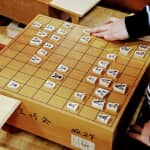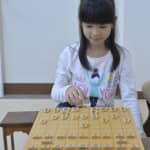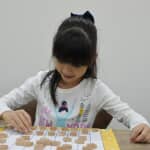Shogi 11 February 2018
Shogi Rules – How to Play Shogi – : Step 3-5 Piece Exchange
A professional Shogi player invites you to the world of Shogi along with traditional Japanese culture. In this series, there are three steps and each step has around 10 lessons. Even though you don’t know about Shogi, through these three steps you will get knowledge to enjoy it.
*Please note that the Kanji numbers in pictures are spelled in English in the text.
The following Shogi boards have a face with files (vertical rows) numbered 1 through 9 from right to left, and ranks (horizontal rows) designated with Kanji characters, “一” (One) to “九” (Nine), from top to bottom. On the other hand, in the text, each Kanji character is replaced with an alphabet, from “a” to “i” : “一” with “a”, “二” with “b”, … and “九” with ”i”.
Step 3-5: Piece Exchange
Shogi is a game that develops with exchanging your pieces with your opponent’s pieces. Exchange refers to the acts in which you continually capture pieces and your pieces are also continually captured. The captured pieces can be reused.
Look at the below picture:
1. Capture the opponent’s Kaku (Bishop).
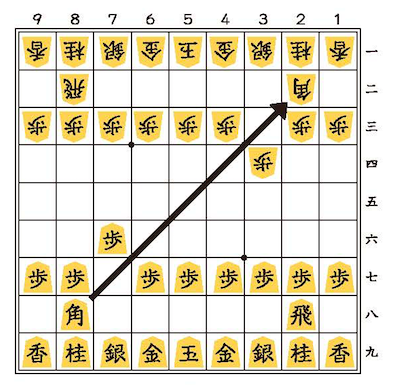
Picture #1: You capture the opponent’s Kaku (Bishop).
2. The opponent also captures your Kaku (Bishop). (馬 shown in the below picture is a promoted Kaku (promoted Bishop))
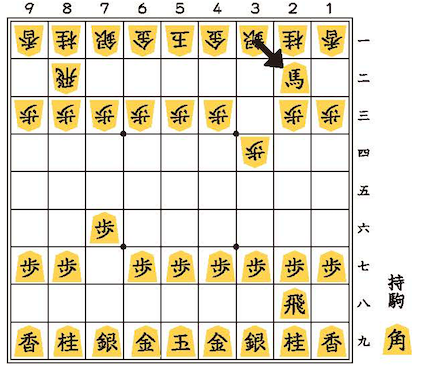
Picture #2: The opponent capture the Kaku (Bishop), too.
An exchange of two pieces of Kaku (Bishop) has bewn done. In this exchange, two pieces that have the same value were exchanged. Even though you didn’t gain anything more from the exchange, transforming a piece on a board to a hand piece will allow you to use the piece freely. It’s worthy to do.
Two pieces of Kaku (Bishop) were applied in the above example. But, “exchange” doesn’t require you to exchange the same two pieces. As long as both players gain a hand piece, the move is called “exchange”. When you exchange pieces, you need to calculate two future moves, your move and your opponent’s move.
Once you get the hang of exchanging, try to make a better deal for you. If you capture a more valuable piece with a less valuable one, it’s a good deal.
1. You capture your opponent’s Kaku (Bishop) with your Kin (Gold).

Picture #3: You capture an opponent’s Kaku (Bishop).
2. The opponent capture Kin (Gold).

Picture #4: The opponent capture your Kin (Gold).
You got Kaku (Bishop) and the opponent did Kin (Gold). As you know Kaku (Bishop) has higher value than Kin (Gold). So, it can be said to be a great deal.
Before you exchange pieces, you might want to think carefully about which piece you will gain and which piece you will give. Making a good deal in your exchange, let’s get the upper hand!
After Today’s Lesson
I learned that piece exchange requires players to be proactive. Piece exchange is not always one-time event, but sometimes it repeats. Even though you exchange pieces in anticipation of a valuable exchange, you would sometimes not get the desirable result. In some cases, you could get the desirable result by chance. I enjoyed my daughters’ facial expressions made in each time. Everything requires foresight, doesn’t it?
Why don’t you get opportunities to learn Shogi everyday without difficulty? We are offering a series of textbooks named “Shogi Lesson Book for Beginners” on our website, which provide wonderful Shogi learning materials for Shogi beginners.
Please visit our website and check our online shop.
